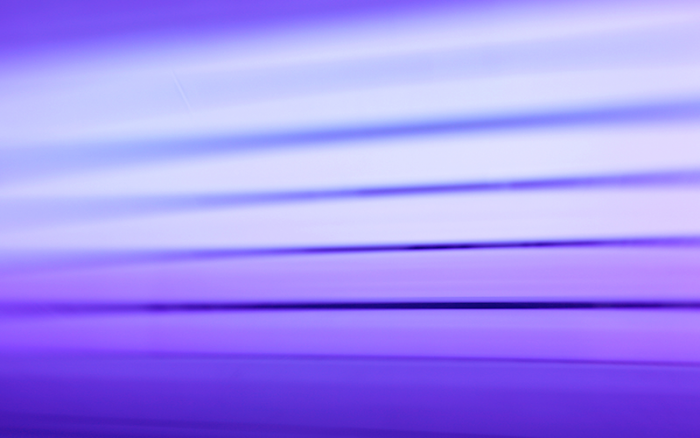For the many people who suffer from eczema, finding relief can be a constant challenge. Flare-ups can come and go without warning, causing chronic itching and symptoms that can range from a rash to open sores and skin infections.
Just as the symptoms vary, so do the treatments, which depend upon the individual and the severity of your condition. There’s no “one-size-fits-all” solution, but if you suffer from more extreme symptoms, you might benefit from UV light therapy, which also is referred to as phototherapy.
“This isn’t a treatment that’s right for everyone, but it can be a huge relief for people who are living with severe symptoms of eczema,” says Dr. Alex Jack, a board-certified dermatologist at U.S. Dermatology Partners Kyle in Kyle, Texas. “It has shown a great deal of promise for people who have atopic dermatitis, which is the most common type of eczema and can be very difficult to treat.”
Understanding how UV light therapy works, what it can do for you and learning the potential risks and outcomes can help you and your dermatologist decide if this is the right type of treatment for your condition — and whether you can use it to manage your eczema effectively.
What Is Ultraviolet Light Therapy?
As the name implies, UV light therapy uses ultraviolet light waves, which are very similar to the ultraviolet light produced by the sun, to heal irritated skin. In most cases, dermatologists will use equipment that emits narrowband ultraviolet B (UVB) light. The treatments can be done all over the body for widespread eczema or can be used only in targeted areas (such as the hands and feet) if they have not been responsive to treatments.
The American Academy of Dermatology Association recommends only using UV light therapy when other treatments, such as emollients and topical steroids, have failed.
“UV light therapy has had a lot of positive outcomes for patients,” Dr. Jack says. “It can help calm inflammation, reduce the amount of itching, improve the skin’s ability to fight bacteria and can also increase vitamin D production.”
According to the National Eczema Association, it is effective in about 70% of all users.
What to Expect from UV Light Therapy
When receiving UV light therapy, your dermatologist will apply moisturizer to your skin before allowing any exposure to the light. You also will wear special goggles to protect your eyes from the UV rays.
The amount of time each affected area is treated can be a few seconds or several minutes, depending on how long you’ve been receiving the treatments.
“Every situation is different, so the amount of time needed for treatment can vary greatly from one person to the next,” Dr. Jack says. “We start with very short exposure times and gradually increase that time, depending on how well the patient’s skin responds.”
If, after receiving several treatments you have a good response, your dermatologist may even stop the sessions to see if your eczema is in remission.
“It can take a couple of months of regular treatments to see improvements, but over time, it’s very possible that flare-ups won’t occur as often, which means patients can go longer between treatments.”
Knowing the Risks of UV Light Therapy
While those who have benefited from UV light therapy are quick to sing its praises, Dr. Jack points out that it’s important for patients to understand that there can be certain risks involved.
“When you’re being monitored by a doctor, you have a lowered risk of side effects, but they can still occur,” he says.
Some of the most common side effects of UV light therapy are:
- Burning or stinging sensation after treatments
- Premature aging of the skin, particularly for people with fair skin
- Sunburn
Less commonly, some of the following more severe side effects can occur:
- Reactivation of herpes symptoms in those who already have the virus
- Facial hypertrichosis, or excessive growth of facial hair
- Rash
- Non-melanoma skin cancer
Know Your Options
Discussing your treatment options with your dermatologist can help you determine whether or not UV light therapy is best for you. Being able to weigh the risk versus the benefit of the treatment, and seeing what kind of results other eczema patients have had with UV light therapy can also help in your decision-making process.
“It’s important to understand that, even when it works, this isn’t a rapid solution,” says Dr. Jack. “However, for those who are suffering from eczema and have not been able to find relief through other types of treatment, UV light therapy could be the right solution.”
He adds that while there are risks, the likelihood of most side effects are relatively low, which is why UV light therapy is endorsed by such organizations as the American Academy of Dermatology and the National Eczema Association.
“For anyone who is suffering from severe eczema, and has not found the kind of results or relief they need, UV light therapy is definitely worth discussing with your dermatologist.”
Looking to Visit a Dermatologist?
We have multiple locations throughout the country, so fill out our simple online form to get in touch with us. One of our local team members will reach out to you shortly to answer your questions or schedule an appointment for you to visit us soon.
Find a location near me
or

